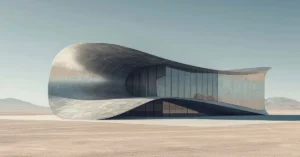How to Design a Prison as an Architect: Balancing Security and Humanity

As an architect, few projects come with as much societal weight and ethical consideration as designing a prison. The task is not merely about creating a structure to contain individuals but about balancing the needs of security with the preservation of human dignity. In this guide, we’ll delve into the multifaceted process of designing a prison, exploring the architectural principles, ethical considerations, and innovative approaches necessary to create spaces that serve both the inmates and society at large.
Understanding the Purpose
Before diving into the design process, it’s crucial to understand the purpose of a prison beyond just confinement. Prisons serve as institutions for punishment, deterrence, rehabilitation, and societal protection. Each of these purposes presents unique challenges that architects must address in their designs.
Security as a Priority
Security is paramount in prison design. The architectural layout must prevent escapes, control movement, and ensure the safety of both inmates and staff. Perimeter walls, secure doors, and surveillance systems are fundamental elements of any prison design. However, effective security goes beyond physical barriers; it also involves strategic placement of spaces, such as guard stations and surveillance blind spots, to minimize opportunities for violence or illicit activities.
Humanizing the Environment
While security is non-negotiable, it shouldn’t come at the expense of human dignity. Designing a prison that maintains a sense of humanity is essential for fostering rehabilitation and reducing recidivism. This involves creating spaces that promote positive social interactions, access to natural light, and opportunities for education and skill development.
Innovative Approaches to Rehabilitation
Modern prison design incorporates innovative approaches to rehabilitation, acknowledging that punishment alone is insufficient for addressing the underlying causes of criminal behavior. Architectural elements such as communal areas, outdoor spaces, and multipurpose rooms facilitate programming aimed at addressing mental health issues, substance abuse, and vocational training. By creating environments conducive to personal growth and self-improvement, architects can play a crucial role in breaking the cycle of incarceration.
Community Integration
Prisons are not isolated entities but integral parts of the communities they serve. As such, architects must consider the impact of their designs on the surrounding area. Integrating green spaces, community centers, or vocational training facilities into the prison complex can foster positive relationships between inmates and the community while providing opportunities for reintegration upon release.
Ethical Considerations
Designing prisons inevitably raises ethical questions about the nature of punishment, the treatment of inmates, and the role of architecture in shaping societal values. Architects must navigate these complexities with sensitivity and a commitment to upholding human rights. This may involve advocating for humane living conditions, access to healthcare, and opportunities for education within the confines of the prison walls.
Case Studies
Examining successful prison designs can provide valuable insights into the principles and practices that contribute to effective rehabilitation and reintegration. Examples such as Norway’s Halden Prison, known for its emphasis on rehabilitation and humane living conditions, demonstrate the potential for architectural innovation to transform the prison experience.
Conclusion
Designing a prison as an architect is a complex undertaking that requires a delicate balance between security imperatives and humanitarian principles. By prioritizing the safety and well-being of both inmates and staff, architects can create environments that not only fulfill their intended function but also contribute to the broader goals of rehabilitation and societal reintegration. Through thoughtful design and innovative approaches, prisons can become spaces of healing and transformation, rather than mere instruments of punishment.
If you’re interested in learning more about architecture firms in Europe, check out this comprehensive list of the top 50 firms compiled by Archgyan. From innovative startups to long-established industry leaders, this list has it all. Take a look and discover some of the most inspiring and influential architecture firms in Europe today.
If you’re interested in architecture and want to learn more about this amazing field, subscribe to our podcast on youtube
For more SketchUp tutorials, head to https://www.sketchupguru.com













